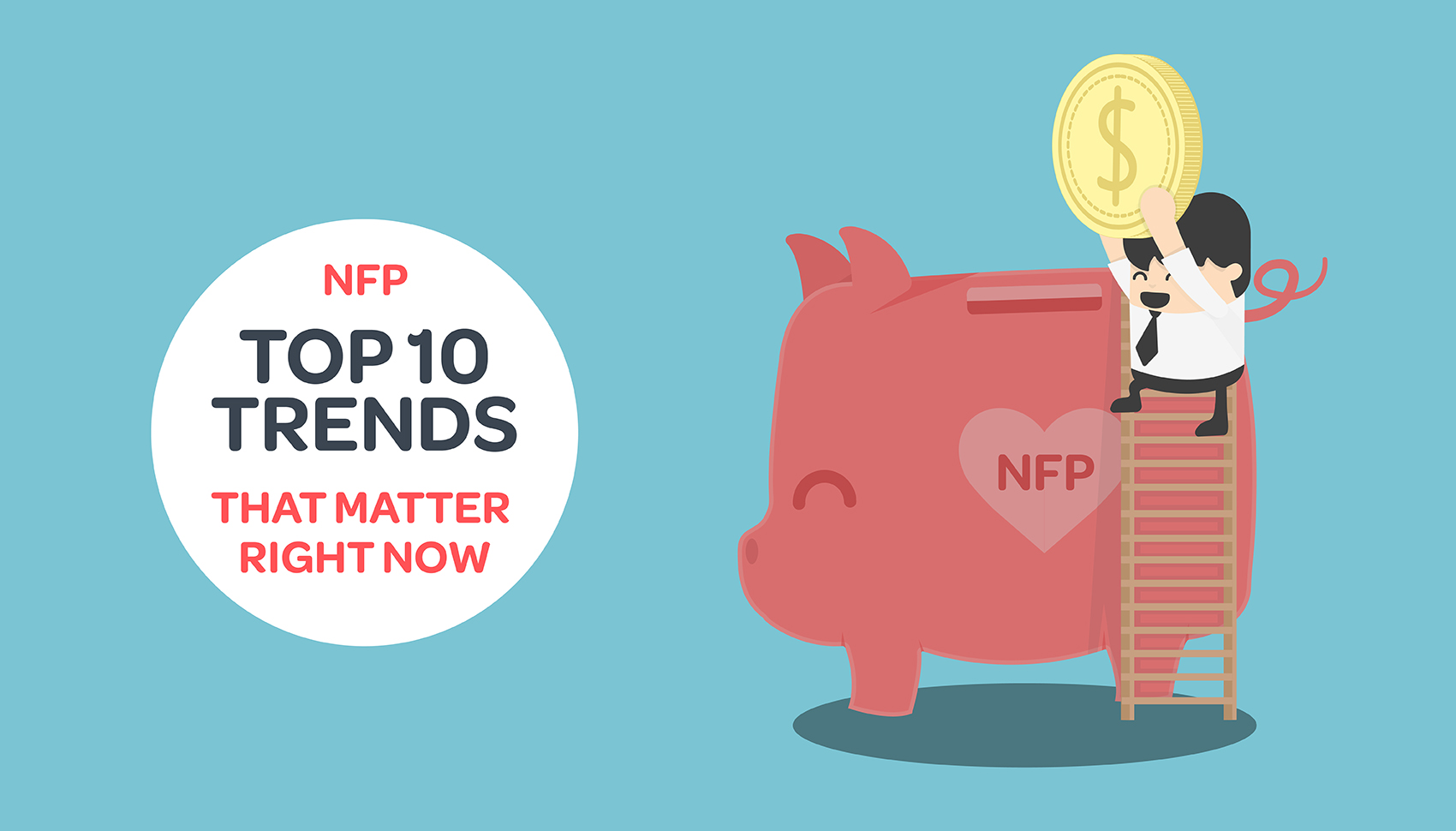Now is always the best time to review what the current and emerging trends are. So let’s talk about what’s happening in the NFP space. NonProfitPro released a list of mega Top 40 trends for nonprofits in 2017, which you can download here (you’re welcome). And for now, here’s our pick of 10 high-impact trends we think have the most relevance for our nonprofit clients and friends.
1. Social fundraising, integrated across platforms
It’s not enough to simply have a presence across all digital and social platforms (and yes, that might even mean Snapchat for some), one of the key factors for nonprofits is ensuring your brand and look is integrated across all too. There point here is that as you need to be in multiple spaces simultaneously, how you show up in each space needs to look, sound and feel the same. This is what a cohesive brand looks like today, and you never quite know how potential donor is going to connect to you - with hashtags, shares and mentions. It’s important to keep on top of updates and changes too. For example, have you updated the header image on your LinkedIn page?
2. Time to go deeper
While email marketing and eDMs are certainly very much effective, nonprofits are encouraged to take a deeper look at how they communicate before that send button is clicked. Trends are moving towards donor knowledge, customisation and personalisation as a means to increase return. It’s the old ‘quality and not quantity’ approach, only this time; data will add much more weight into what approach marketers take, what they say and how it is targeted.
“Volume is not the only (or even best) lever with which to move growth. Rather, we can go deeper—and get more—out of every precious communication with a constituent.” – VP, Donor Voice
3. Influencers are stronger than ever
Social media users are increasingly savvy to promotions and targeted content. This isn’t to say that they aren’t successful in some ways, but as people become increasingly wary of click-baited marketing prompts the rise of the importance of influencers is clear. Who are the influencers in your donor pool or subject area? Who do they speak to and how to they speak? Influencers are an excellent way to reach out and build new audiences outside of your organisations’ perceived access. Community influencers are also high impact, their message and audiences are also more inclined to act and support.
4. Harnessing technology for a seamless experience
Deemed ‘The Amazon Experience’, customers and indeed donors are all beginning to expect a seamless experience. For the most part we have shifted into digital interactions, and how those interactions play out into the overall experience needs to create something that is… seamless.
5. Celebration fundraising
‘Celebration fundraising’ sits at the helm of DIY fundraising and has fast emerged as a new trend. This combines feelings of compassion with connection, and during gatherings such as Christmas, weddings, birthdays people are asking their friends and family to donate to their chosen cause. An opportunity exists for nonprofits to create support resources to encourage this trend, improve the brand awareness experience and increase funding.
6. Emphasis on storytelling
This has come up quite a lot recently. Nonprofits can be quite good at touching their donor base, but are they really touching that sense of intrinsic motivation that connected the donor to the cause at the start. Recognition of their contributions is effective, case studies as well as tangible, compelling and emotive stories that paired with effective visual and brand styling frame a message as a ‘must see, hear, share and act’ story.
7. Voice Intelligence Technology for Giving
Leigh Kessler from Charity Engine USA predicts that voice technology may completely transform the giving economy. “Your direct mail piece or TV spot can say, ‘If you have Amazon Echo, just say ‘Alexa, I’d like to Give $25 to customURLnonprofit.org.’” The implications here for nonprofits are many, Leigh highlights the role the custom URLs could potentially play in such campaigns.
8. Focus on donor retention
It is much more cost effective to retain a donor than to acquire a new one, which is why keeping your newly acquired donors engaged is so important. It is critical to stop ignoring data and pay attention to retention rates. That is one side of the coin. The other is to make donor retention a key goal within your organisation, developing a strategy to nurture them.
9. Automation and data analysis improve
With the increase in the use of automated software, applications and measurement tools, nonprofits have more access and visibility into metrics than ever before. This makes designing clever campaigns using data something nonprofits must do rather than should. As things progress, the growing expectation is that donors should be able to see a visual, transparent representation of ROI – and more specifically, how their contribution helps.
10. Analog nostalgia in a digital world
Digital is your friend, and if it isn’t… it should be. But we are also seeing a sense of nostalgia developing for the tangible, the tactile, the real. For nonprofits it’s important to remember that your donors are looking for a human experience. Something that nonprofits have traditionally been able to achieve and something that is important not to forget. You can still find it through print based materials, beautiful photography, fair quality paper, personalised envelopes, anticipation, experience and touch. Remember those feelings? Sure you do!
We specialise in helping the NFP sector
For advice on putting together your marketing strategy, breaking it down into achievable chunks or the best allocation of your marketing budget – including data analytics – get in touch with Make It Happen.

